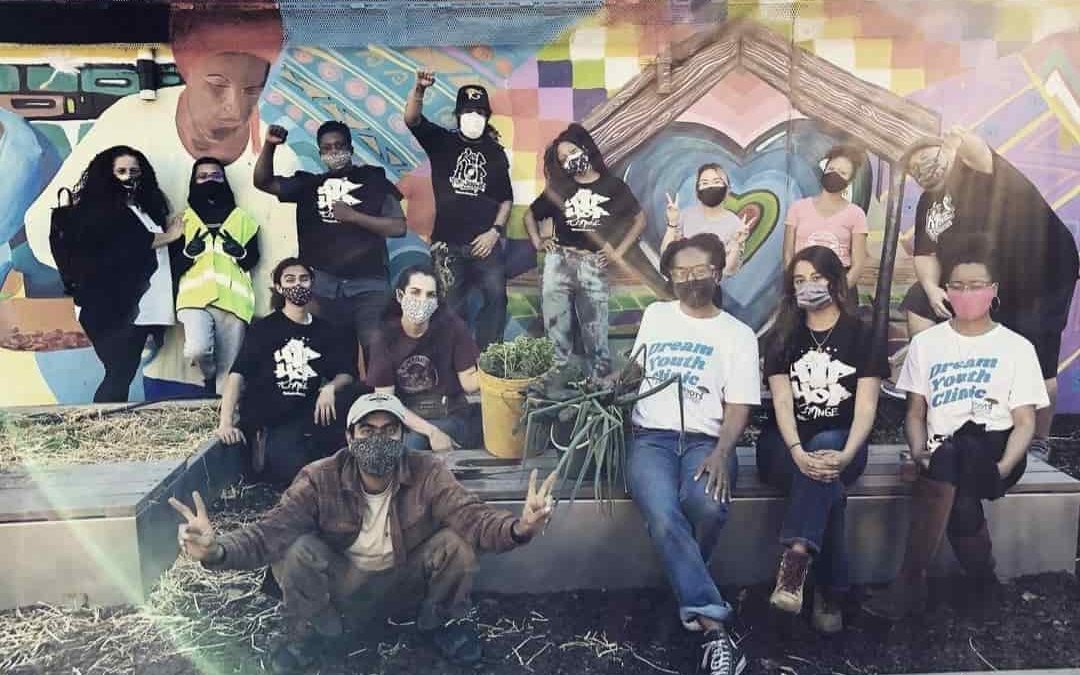
Case Study: The Garden of Dreams
Envisioned by young community members in 2019, the Dream Youth Clinic’s Garden of Dreams has blossomed over this past year, providing a green safe-space in a formerly blighted section of their cul-de-sac. At the start of the pandemic, health advisors stressed the importance of sheltering-in-place to slow the spread of COVID-19. This was a tall order for those without stable housing to quarantine in or somewhere to go to refresh outdoors. For residents of Dreamcatcher Youth Shelter, an affiliate of the Youth Clinic, the creation of the Garden of Dreams helped remedy this situation by providing a healthy environment to relax, remain active, and reflect during the stress of the pandemic.
Thanks to the leadership of Dr. Aisha Mays, a physician at the clinic, and her team of young volunteers, the Garden of Dreams stands out as a model resilience space. From the beginning, they have excelled at promoting youth leadership and equity. Instead of dictating what young people needed, the clinic asked their youth community what would best support them. The youth responded enthusiastically that they wanted a garden. The design of the site’s rainwater catchment system exemplifies how this emphasis on youth voices persists to this day. Using white butcher paper, the youth of the clinic wrote out inspirational messages. These messages were then carved, in their own handwriting, into the panels of their water gazebo. In terms of equity, the garden emphasizes the incorporation of indigenous healing practices and provides stipends to youth volunteers and leaders who help out on planting days and who lead workshops. By providing financial support, the garden uplifts their young community members and encourages further climate action and leadership. Two years after the first visioning session, the garden now offers a variety of fruits and vegetables that are often unaffordable and out of reach for many young people and community members
To bring people together, the hub has developed a network of robust partnerships with a variety of community organizations and local governmental departments. They received two grants from the NorCal Resilience Network and currently collaborate with DreamCatcher Youth Services, MISSSEY, Planting Justice, HumaniTree, Acta NonVerba, BART, and the Oakland City Council. They also hold regular events such as planting days, garden youth cooking workshops, food distribution, and youth block parties. These events and connections help break down barriers between groups, allowing greater cooperation and interconnectivity.
The Garden of Dreams’ leaders continue to envision how to strengthen their site’s resilience. One area that they are focusing on more is disaster preparedness. Although the hub does have sufficient supplies of food, water, and medical equipment, they do not have a clear emergency response plan for frequent disasters such as excessive heat, smoke, drought, or earthquakes. The committee intends to formalize their emergency plans and provide more training in first aid and emergency medical care. To address climate change, the Garden of Dreams has installed solar panels on the aforementioned rainwater catchment system to pump water for the garden. They have also incorporated drought-tolerant landscaping, drip irrigation, and water efficient appliances for the clinic and the garden.
The Dream Youth Clinic’s Garden of Dreams is a visionary resilience space that is constantly looking for new ways to strengthen their community. Through these measures, this hub will further promote the health and wellbeing of their youth community and strengthen their resilience in the face of an intensifying climate crisis.
If you are interested in learning more about the Dream Youth Clinic, click here:
https://rootsclinic.org/dream-youth-clinic-2/ or follow DreamYouthClinic on Instagram and Facebook